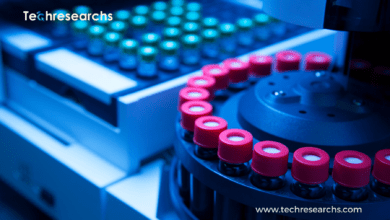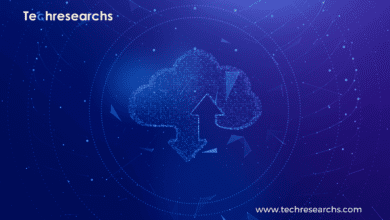Unlocking the Future of Data Storage: The DNA of Things (DoT)


The DNA of Things (DoT): In the digital age, the amount of data that we generate is staggering. From social media posts to online purchases, we are creating and consuming data at an unprecedented rate.
With the advent of the Internet of Things (IoT), we are generating even more data, with sensors in everyday objects gathering information about our environment and our behavior.
All of this data needs to be stored somewhere, and traditional storage methods are struggling to keep up.
This is where the DNA of Things (DoT) comes in – a new way of storing data that uses the building blocks of life itself.
What is The DNA of Things (DoT)?
The DNA of Things (DoT) is a method of storing data using DNA. DNA, or deoxyribonucleic acid, is the molecule that carries genetic information in living organisms.
It is a complex molecule made up of four different nucleotide bases – adenine, thymine, cytosine, and guanine.
These four nucleotide bases can be thought of as the building blocks of DNA. Each floor pairs up with a complementary base – adenine with thymine, and cytosine with guanine – to form the rungs of the DNA ladder.
By stringing together different combinations of these bases, scientists can create synthetic DNA strands that can be used to store digital information.
How does it work?
To store data in DNA, scientists first need to convert the data into a DNA sequence. This is done using a process called DNA synthesis, in which short sequences of DNA – known as oligonucleotides – are chemically synthesized to represent the data.
These oligonucleotides are then combined to create a longer strand of DNA that can be used to store the data.
Once the data has been encoded into DNA, it can be stored in a variety of ways. One method is to simply freeze-dry the DNA and keep it in a tube.
Another approach is to embed the DNA in a 3D-printed object or a plant. This creates a physical object that can store the data, making it easier to transport and access.
Why use DNA to store data?
There are several advantages to using DNA to store data. Firstly, DNA is incredibly dense – it can store vast amounts of information in a very small space.
Secondly, DNA is incredibly stable – it can last for thousands of years without degrading. This makes it an ideal storage medium for long-term archives.
Another advantage of using DNA to store data is that it is highly secure. Unlike traditional storage methods, which can be hacked or corrupted, DNA is very difficult to tamper with.
This makes it an ideal medium for storing sensitive information, such as financial data or government records.
Learn more about Unveiling the Next Big Advancements in the Internet of Things (IoT)
Conclusion: DNA of Things (DoT)
The DNA of Things (DoT) is an exciting new way of storing data that has the potential to revolutionize the way we think about information storage.
By using the building blocks of life itself, scientists are able to create a highly secure, highly dense, and highly stable storage medium that can last for thousands of years.
As the amount of data we generate continues to grow, and traditional storage methods struggle to keep up, the DNA of Things (DoT) offers a promising solution to the problem of data storage.
Whether it is embedded in a 3D-printed object or stored in a freeze-dried tube, DNA has the potential to transform the way we store and access information in the years to come.







